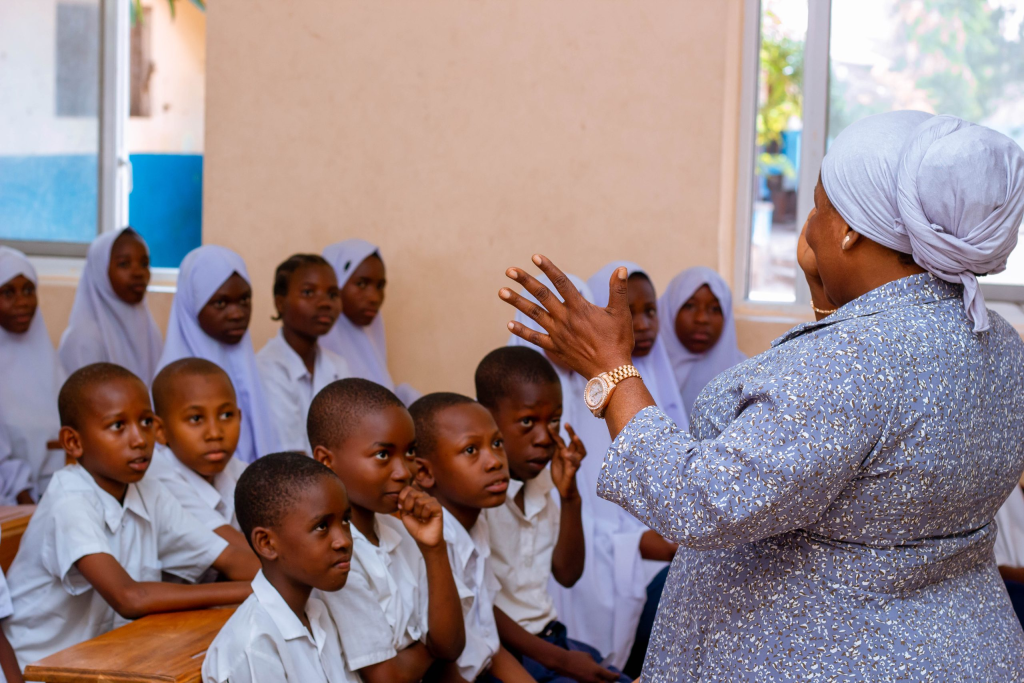
By Clifford Boniface Sangai, April 17, 2025
An innovative educational approach gaining momentum in Tanga City is proving to be a game-changer for primary school students. Known as Teaching at the Right Level (Tarl), projects implemented by TangaYetu Phase 1. This methodology recognises children’s diverse learning needs and offers a tailored solution to bridge gaps in foundational literacy and numeracy. Unlike traditional classrooms, where all students are taught the same content regardless of their abilities, TaRL begins with a simple yet powerful question: What can each child do right now?
A Tailored Approach to Learning
The TaRL model starts by individually assessing students’ foundational skills in reading and math. Based on these assessments, children are grouped according to their current learning levels—not by age or grade. Each group then receives instruction that meets them where they are, allowing them to progress at their own pace toward mastering core competencies.
For example, children struggling with phonics might engage in daily sessions featuring songs, games, and interactive activities focused on letter sounds, syllables, and word recognition. Meanwhile, students who are already reading full sentences may work on paragraph comprehension or creative writing exercises. This differentiated approach ensures that no child is left behind—a goal often discussed but rarely achieved in overcrowded classrooms.
Mwajabu Ally, a teacher at Majengo Primary School, shared her experience:
“We saw children who were previously withdrawn and discouraged begin to participate. Using songs, games, and interactive methods, we’ve seen incredible progress—children who once struggled are now confident and excited to learn.”
Measurable Impact Across Tanga
TaRL was piloted in 20 primary schools across Tanga City, reaching over 2,000 students. Initial assessments revealed significant challenges:
- 473 students couldn’t read a simple story or even syllables.
- 630 students struggled with basic arithmetic functions like addition and subtraction.
However, the results after implementing TaRL have been remarkable:
📖 81% (377 students) in the literacy track gained the ability to read paragraphs and stories.
➕ 405 students mastered foundational math skills, including number identification, basic operations, and problem-solving.
For a program delivered over a relatively short period, these outcomes demonstrate its transformative potential.
“It challenged us to move away from ‘chalk and talk,’” said Mwajabu Ally. “Now we guide students through learning paths that make sense to them. As teachers, we feel more effective and fulfilled.”
From Skepticism to Belief: Parents’ Journey
When TaRL first launched, skepticism among parents was common. The idea of grouping students by learning level rather than grade led to misunderstandings.
One parent at Kana Primary School questioned:
“Why did you move my child from Standard Six to Standard Three without telling me?”
Others had been told their children had learning disabilities. One parent recounted:
“I was told my son would never learn. I believed them. I even thought my child was bewitched.”
But the transformation became undeniable at home. A mother described how her daughter, after just a few TaRL sessions, began reading words on old cooking oil jerricans in their kitchen. Soon, she was reading newspapers aloud.
“She used to say she couldn’t read,” shared a parent at Jaje Primary School. “Now she reads paragraphs. She even reads for her younger siblings.”
Another parent added:
“The best thing isn’t just the 3Rs (Reading, Writing, and Arithmetic). It’s that they now believe in themselves.”
A Shift in Community Mindset
Beyond improving test scores, TaRL has sparked a cultural shift among students, teachers, and families. Teachers have transitioned from lecturers to facilitators, students have become active participants in their learning journeys, and parents have embraced their roles as partners in education.
What began as a pilot project is now generating widespread demand. A teacher at Majengo Primary School remarked:
“The results are extraordinary. This should be scaled to more schools.”
The Path Forward
TangaYetu’s introduction of the TaRL model has shown that catching up is possible, even for students who have struggled for years. By providing tailored support, the program empowers the most vulnerable learners to thrive and transforms how they perceive their own potential.
With broader adoption, increased investment, and ongoing teacher training, TaRL has the potential to reach thousands more students in Tanga and beyond. It represents not only a strategy for closing gaps but also a pathway to unlocking untapped potential.

About the Author:
Clifford Boniface Sangai is a Senior Communications Specialist at INNOVEX Development Consulting Ltd. As a key architect of the TangaYetu Initiative’s communication strategy, Clifford plays a pivotal role in shaping community engagement and amplifying the project’s impact. His expertise ensures that TangaYetu’s voice resonates deeply within local communities and inspires meaningful change.
